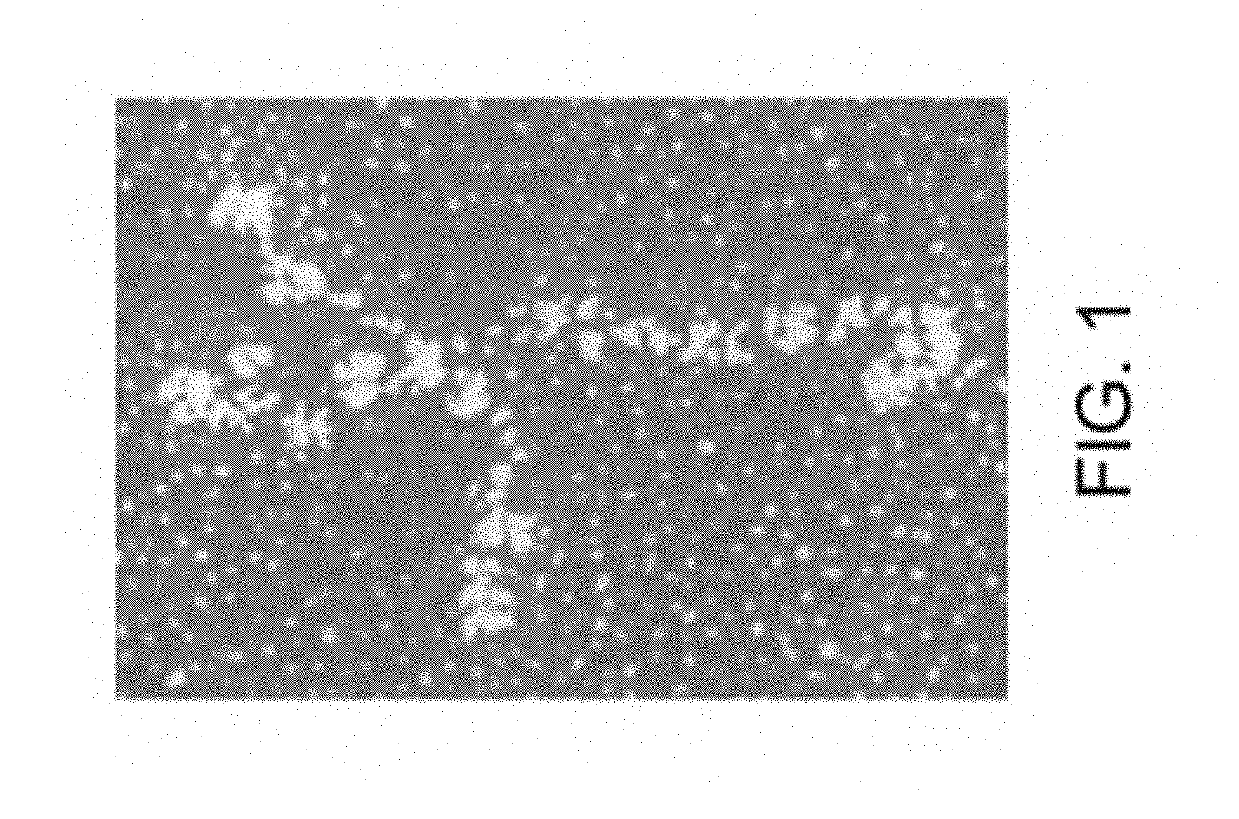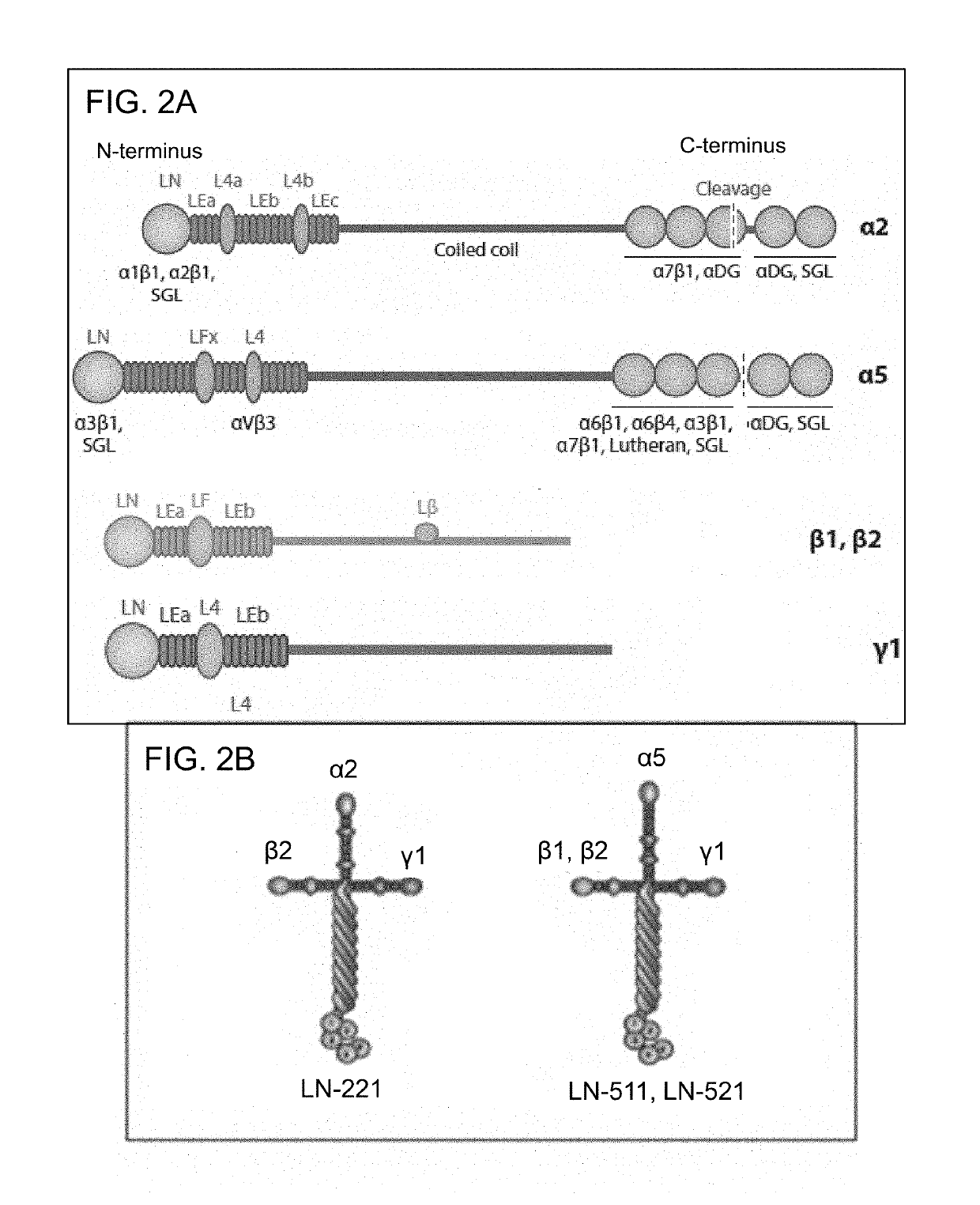Differentiation of pluripotent stem cells and cardiac progenitor cells into striated cardiomyocyte fibers using laminins ln-511, ln-521 and ln-221
a technology of pluripotent stem cells and cardiac progenitor cells, which is applied in the direction of cardiovascular disorders, skeletal/connective tissue cells, drug compositions, etc., can solve the problems of insufficient current cell systems, cell culture can lose the properties of original cells such as protein expression or shape, and the ability of pluripotent cells to form extraembryonic tissue, etc., to achieve the effect of suppressing wnt signaling
- Summary
- Abstract
- Description
- Claims
- Application Information
AI Technical Summary
Benefits of technology
Problems solved by technology
Method used
Image
Examples
example 1
Identification of LN-521 or LN-511 and LN-221 for Combination Substrate Used in Differentiating Cardiomyocyte Cells
[0151]The described method for differentiating cardiomyocytes from human pluripotent stem cells includes two specific human laminin isoforms (i) LN-521 or LN-511 and (ii) LN-221 that, based on expression analysis of human heart muscle, could be considered important as cell culture substrata. Based on mRNA analysis, laminin chains, alpha-2, beta-2 and gamma-1 are the most highly expressed alpha, beta and gamma laminin chains in the mature cardiac muscle. The alpha-5 and beta-1 chains are less abundant, and alpha-1, alpha-3, beta-3, beta-4, gamma-2 and gamma-3 exhibit low or no detectable expression. It is therefore hypothesized, without being held to any particular theory that LN-221, which has the highest expression, is of major importance for the development and maintenance of cardiomyocyte phenotype and function.
[0152]To test this hypothesis, full-length cDNAs for the...
example 2
Generation of Striated Muscle-Like Muscle Fiber
[0153]Pluripotent hESCs on LN-521 were maintained using a chemically defined maintenance medium, Nutristem (Stemgent), without the need of ROCK inhibitor. Nutristem contains a low amount of bFGF (4 ng / ml) as compared to mTesR1, which contains an unnecessarily high amount (100 ng / ml) and bovine serum albumin (BSA). Prior to differentiation, 2×105 cells / cm2 were seeded into wells coated overnight with a 50% mixture of (i) LN-521 or LN-511 and (ii) LN-221 (provided by BioLamina).
[0154]Without being bound to any particular theory, the rationale is that LN-221 is the most abundant laminin expressed in the ultrathin basement membrane surrounding human heart muscle fibers. The underlying LN-521 or LN-511 may promote cell attachment and proliferation, while LN-221 provides a natural niche for cardiomyocyte formation.
[0155]Cells were maintained for 4 days to achieve sub-confluence and at day 0 of differentiation, 12 μM of CHIR 99021 (Tocris) (a ...
example 3
Stabilization and Expansion of Cardiomyocyte Progenitors as Exemplified by Islet-1 and NKX2.5 Positive Cells on LN-511 or LN-521
[0156]Maturation of cardiomyocyte progenitors can be stopped and maintained at their differentiation stage (e.g. islet-1 positivity) by placing them on either LN-511 or LN-521 matrix. At day 5 of the differentiation protocol, cells were dissociated with TrypLE buffer and re-plated into new LN-511 / LN-521 coated wells with media containing GSK inhibitor which will enhance Wnt signaling, BMP inhibitor and Activin / Nodal inhibitor. Continual passaging of cells at sub-confluence ensures the stabilization and expansion of the highly homogenous progenitor cells.
[0157]Immunostaining of the progenitors showed that they are 99% positive for both islet-1 and NKX2.5 transcription factors. These cells can then be passaged at least 6 times such that the cells maintain 99% positivity for those two cardiomyocyte progenitor markers. These progenitors can also be long-term cr...
PUM
| Property | Measurement | Unit |
|---|---|---|
| time period | aaaaa | aaaaa |
| concentration | aaaaa | aaaaa |
| shape | aaaaa | aaaaa |
Abstract
Description
Claims
Application Information
 Login to View More
Login to View More - R&D
- Intellectual Property
- Life Sciences
- Materials
- Tech Scout
- Unparalleled Data Quality
- Higher Quality Content
- 60% Fewer Hallucinations
Browse by: Latest US Patents, China's latest patents, Technical Efficacy Thesaurus, Application Domain, Technology Topic, Popular Technical Reports.
© 2025 PatSnap. All rights reserved.Legal|Privacy policy|Modern Slavery Act Transparency Statement|Sitemap|About US| Contact US: help@patsnap.com



